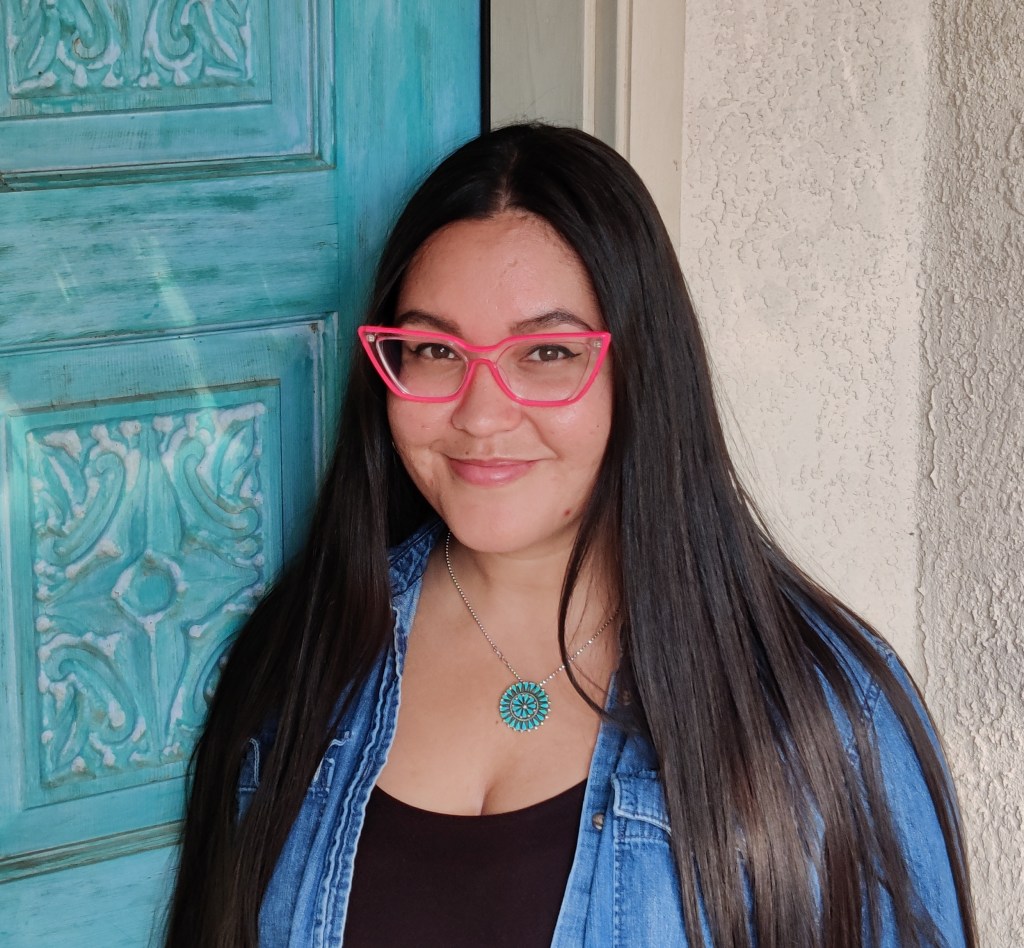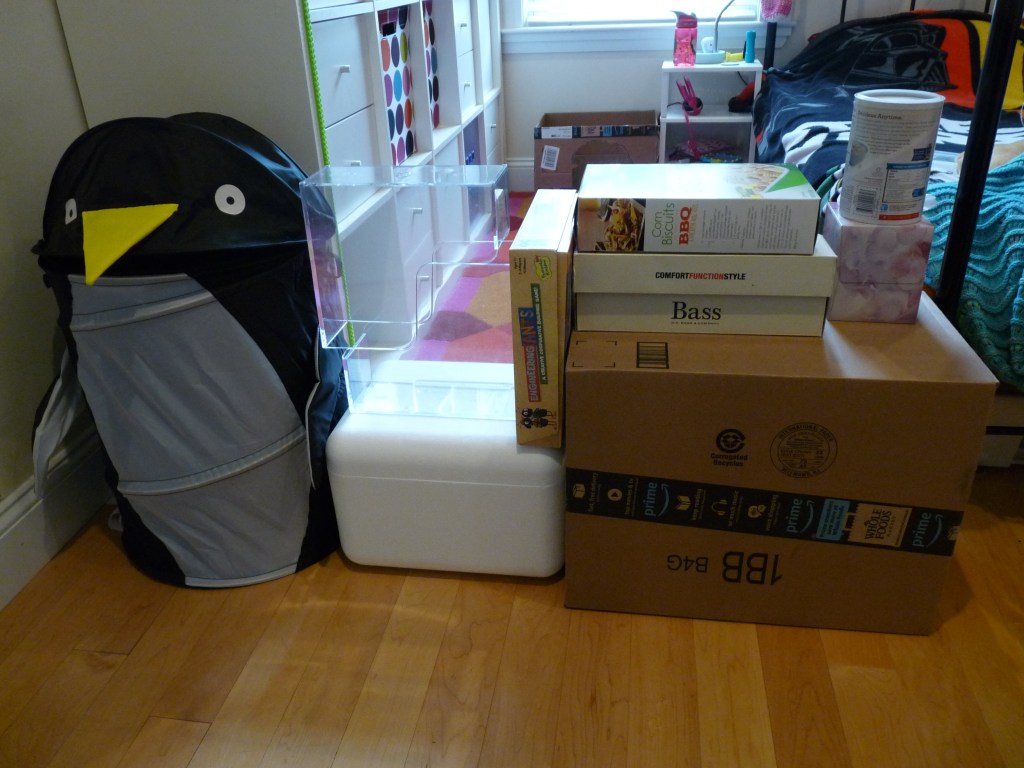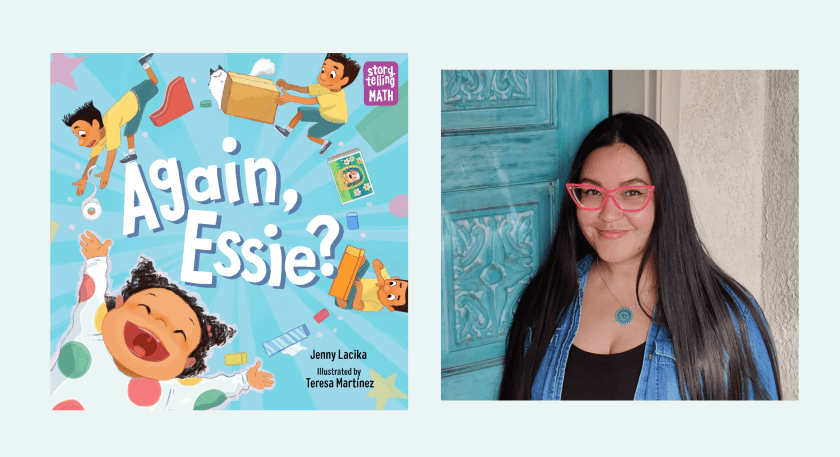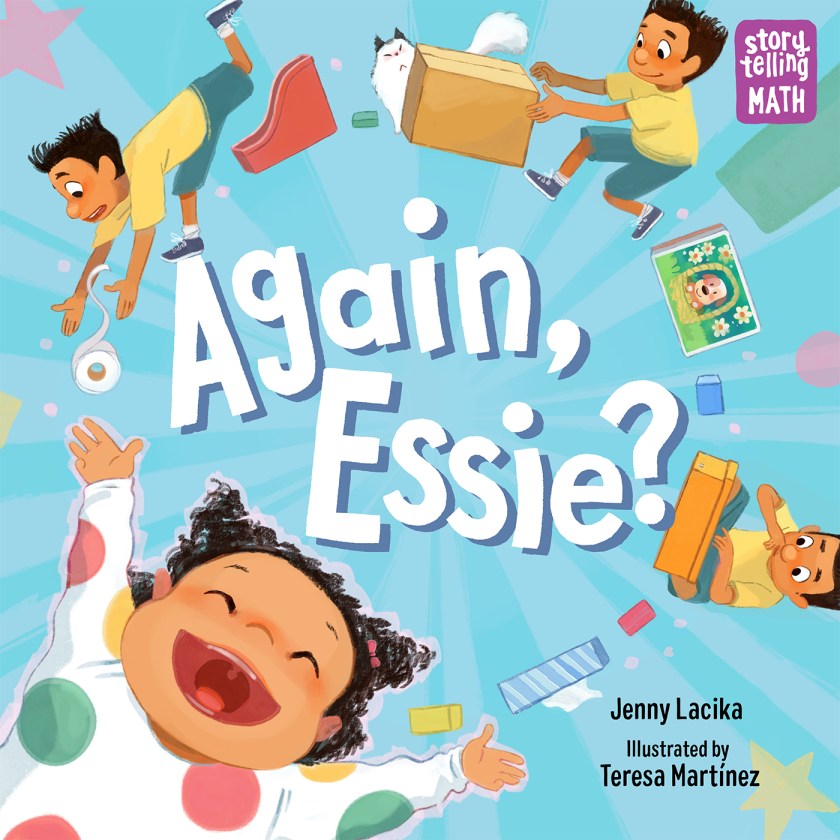
CAROL GORDON EKSTER: I met Jenny Lacika in my picture book critique group in Cambridge, MA, where we met in person pre-Covid. I’ve watched Jenny’s journey of improving craft and writing wonderful and unique manuscripts. I’m so happy to interview her here about her debut picture book.
Jenny, what was your journey to becoming a published author?
JENNY LACIKA: I really, really loved reading as a child, but never once thought I would be an author. I just didn’t think I had anything interesting to say. Instead, I focused on STEM and was eventually working as a management consultant. Then I started experiencing extreme fatigue and cognitive changes associated with multiple sclerosis. I felt like I was losing a piece of myself. When I became a mother, I rediscovered that childhood love of reading. Making the jump from reader to writer wasn’t because I suddenly had more to say, it was because I needed to keep my mind active.
I was fortunate that my neighbor at the time was picture book author Ellen Mayer. She directed me toward different groups and organizations. I connected with SCBWI and The Writers’ Loft where I learned more about publishing and the elements of picture books. I started writing picture book drafts and participating in critique groups. I was learning a lot from other writers, but I was really struggling to find my voice.
I had been writing for several years when, in early 2018, I saw a call for submissions for math-based stories with a cultural element, combining two things that are really important to me but I had never considered writing about! The call for submissions really helped me focus my writing and pushed me to pursue publication. It seems obvious in hindsight, but writing about something I truly care about, and bringing in some of my own life, was how I found my voice.
CGE: It’s so awesome that you were the 2020 NESCBWI Windows & Mirrors Scholarship recipient and the 2021 Meg Medina Volemos Grant recipient. Can you tell us how this affected you? Is there any advice you’d like to share about breaking into publishing, related to community and what you’ve learned on your path to publication?
JL: I think one big lesson I learned from these awards was just how subjective this business is. I applied to [the scholarship and grant] with no expectations, because I try very hard not to self-eliminate from opportunities, and was very surprised to be selected. Having that validation that I do actually have something to say was wonderful, but I was also cognizant of the fact that not everyone who saw those stories was as taken by them. The Windows & Mirrors Scholarship is what pushed me to query agents, eventually finding Miranda Paul at Erin Murphy Literary Agency.
Before I started writing I thought sharing my work would be the hardest part. But now, I can recognize that not everyone will understand every story, and that’s okay. Every critique comes through a particular lens. If I feel passionately about a story and get notes I don’t agree with, I seek out additional feedback. But I do always consider the feedback I don’t agree with because sometimes the hardest critique helps the most.
Those two manuscripts went through many revisions with my critique groups before I submitted. It’s easy to get discouraged and having people in my corner has been essential to my growth as a writer.
CGE: Tell us about the story behind the story of your debut picture book, AGAIN, ESSIE? coming out in May 2022, illustrated by Teresa Martínez, published by Charlesbridge. (The illustrations are so joyful and we can all preorder it now!)
JL: This was not the first story I submitted to the Storytelling Math series. I submitted two stories to the initial call for subs that were not right for the series. But new ideas kept percolating, so when there was another call in 2019, I submitted early and took advantage of the editors’ offer of feedback. I got more insight into what they were looking for in the series and worked on several revisions before Again, Essie? was accepted for publication.
In the story, Rafael tries to save his toys from his baby sister, Essie, by building a wall from shoeboxes, toilet paper rolls, and other household objects, while playfully exploring spatial sense and geometry. The children’s museum here has this giant sign of an Albert Einstein quote, translated into Spanish, “El juego es la forma más elevada de investigación.” That was the spirit I wanted to capture. I wanted to show the math as play; a fun activity.

My youngest was really interested in building with blocks at the time, so I thought it would be fun to incorporate that. I knew I wanted to use math in a scenario that didn’t include any special tools or materials, so I went through my house grabbing objects of different shapes that I thought could be fun to build with. My kids, especially my youngest, helped me get an idea of the types of challenges Rafael might encounter.

Later, when I received my first copy of the book, even though my kids were SO TIRED of me reading them the manuscript through the edit process, they got excited to build again! Their reaction was just what I am hoping readers will be inspired to do.
CGE: Can you tell us a little about your writing schedule and process?
JL: I try to treat writing as my job. I spend as much time as possible working to grow as a writer, but that means different things from day to day or week to week. My actual writing schedule varies wildly depending on how I am feeling physically and mentally. When I am actively writing, I tend to focus on one manuscript at a time, revising and sharing with my critique groups until I hit a roadblock. Then I set it aside and work on something else, coming back to it later, with fresh eyes. I try to have projects at different stages so I always have something to fall back on.
Another huge part of my process is reading. I check the Publishers’ Weekly announcements and take note of the books that catch my eye, or the books acquired by someone I would like to work with, and request them from the library when they are released. If, when I read a picture book, something about it strikes me, I will type out the text and see what kind of literary techniques the author used, how they utilized page breaks, etc. I find that when I am in a writing slump the act of typing out a text helps me warm up and focus because I have to pay close attention to each word and transition. But I also read a lot outside the picture book genre. I love middle grade and poetry and I find that sometimes a word or phrase or theme can inspire me in my own work.
CGE: How are you feeling about the marketing side of becoming an author?
JL: I think this is another area where I am really leaning on community. I am so grateful to you, Carol, for sharing your platform to boost other authors. Being a member of the Las Musas community has also been really wonderful because, while I am excited for every opportunity to share my work, I am equally excited to share other creators’ work.
CGE: What does the future hold for Jenny Lacika?
The Spanish edition of Again, Essie? releases later this year, then I have several more, unannounced, picture book projects that are all very different. I am getting to explore more non-fiction and poetry, different aspects of my identity, and even some more math!
You can connect with Jenny here:
CGE: Thanks, Jenny, for sharing your journey with us!




I’m so excited for you, Jenny!!!!
LikeLike
Jenny, congratulations on finding your pathway. It appears that you and Teresa have produced a book that will inspire and entertain!
LikeLike
I love it! I can’t wait to get my copy. Math stories are so important and this looks fabulous!
LikeLike
Thank you so much Christine!
LikeLike
Jenny, you are inspiring! I can’t wait to read this. It sounds like such a fun book 🙂
LikeLiked by 1 person
Thank you Hilary! The art by Teresa Martínez adds so much humor and joy!
LikeLike
Jenny, I’m so happy for you! And I enjoyed learning more about how this book came to be. Great interview!
LikeLiked by 1 person
Thank you Sara! I appreciate your support!
LikeLiked by 1 person
Jenny, what a wonderful idea for a picture book! I love how the story combines math and sibling relationships. Teachers will love the combination of math and SEL. Are the book’s alignments to CCSS Math at the early grades posted anywhere?
LikeLiked by 1 person
Thank you Marianne! I’m not aware of any information specifically regarding CCSS. Charlesbridge does include early math activities in the back matter and will have additional activities on their website closer to publication. My book incorporates geometry/spatial sense. You can see examples of additional activities from the other books in the series here: https://www.charlesbridge.com/pages/storytelling-math-activities I hope that helps!
LikeLiked by 2 people
Congrats Jenny!
LikeLiked by 1 person
Thank you Cathy!
LikeLiked by 2 people